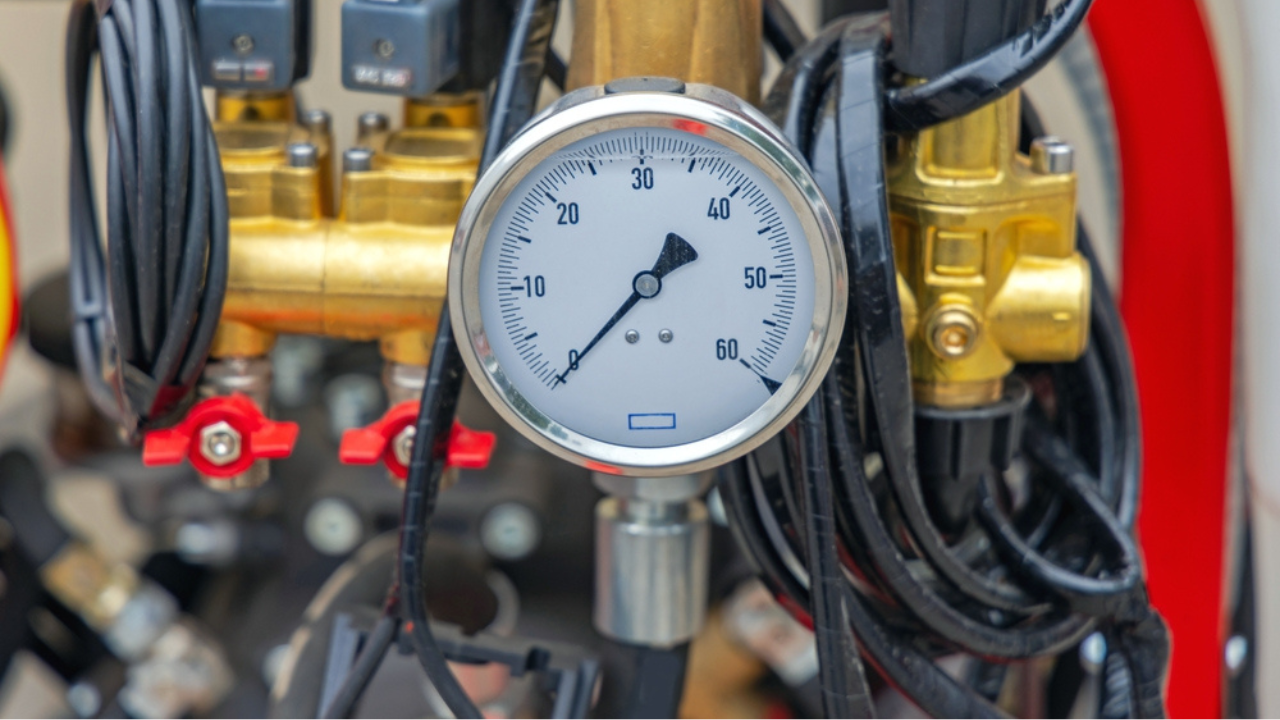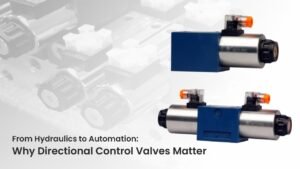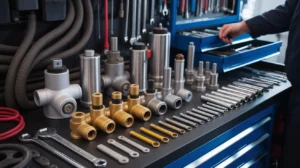Hydraulic systems are the lifeblood of modern machinery, from construction and agriculture to manufacturing and automation. Among the critical aspects of these systems are flow rate and hydraulic system pump pressure, two parameters that directly affect the efficiency, power, and responsiveness of equipment. Whether you are using a mini hydraulic pump or a high pressure hydraulic pump, understanding how flow and pressure work together is essential for ensuring smooth operation and longevity.
Understanding Hydraulic Pumps
Hydraulic pumps convert mechanical energy into hydraulic energy by moving fluid from the reservoir to the system. The volume of fluid moved (flow rate) and the force behind that movement (pressure) determine how powerful and effective a system will be. These variables are often dictated by the application and the hydraulic pump specification.
Popular Hydraulic Pumps Types Include:
- Gear Pumps – Simple and cost-effective, often found in log splitters and low-pressure applications.
- Vane Pumps – Efficient at medium pressure, used in industrial automation.
- Piston Pumps – Ideal for high-pressure environments, including excavators and heavy machinery.
- Mini Hydraulic Pumps – Compact, portable, and great for mobile or space-restricted operations.
What is Flow Rate?
Flow rate is the amount of hydraulic fluid that a pump can pump in a specified time and this is measured in liters per minute (L/min) or gallons per minute (GPM). It is an indication of the rotational speed of the actuator, either hydraulic cylinder or motor.
Flow rate is dependent on a number of variables:
- Pump displacement (cc/rev)
- Rotational speed (RPM)
- Fluid viscosity
- System temperature
As an example, a log splitter hydraulic pump needs high flow to split wood fast but an excavator hydraulic pump should balance between flow and pressure to dig.
What is Pressure in Hydraulic Systems?
Hydraulic pressure is the force that the fluid in the system exerts and is reckoned in bar or PSI. Pressure is essential in lifting, pressing or holding heavy loads and therefore its consideration is an important aspect in the design of hydraulic pumps.
Programs that need high pressure are:
- Construction machinery- backhoes and bulldozers.
- Hydraulic presses.
- Injection molding machine.
- Hydraulic elevators.
Industrial environments, therefore, need a high-pressure hydraulic pump, which can endure heavy loads without failure.
Relationship Between Flow and Pressure
The hydraulic systems are closely connected with flows and pressures. In case of an increase in system pressure, the velocity of the flow can decrease accordingly, but the amount of the input power must be fixed. The most efficient performance of the system will thus depend on a proper pressure-flow balance.
Tips for Optimizing Flow and Pressure:
- Check hydraulic pump specifications: make sure that the flow and the pressure rating of the pump are in line with the requirements of the application.
- Choose the right hoses and fittings: under-sized hydraulic components can cause restriction to flow, increasing pressure losses.
- Check temperature: too much heat worsens the performance of the flow rate and pressure stability.
- Install pressure-relief valves: protects the system against dangerous surges.
- Follow a strict maintenance routine: these processes reduce leakage and wear that affect efficiency of the system.
Choosing the Right Pump for the Application
A hydraulic pump should meet both the requirements of flow and pressure at the same time. Dependence on one parameter (pressure or flow) may trigger the decline of performance or equipment breakdown.
Take the following examples:
An excavator hydraulic pump needs high pressure and variable flow during both digging and lifting of loads.
- A mini hydraulic pump is usually desirable in portable equipment or low power equipment.
- A hydraulic pump that drives a log splitter should have a high flow to operate quickly and maintain adequate pressure to split wood.
- Industrial uses usually require heavy duty pumps that are designed to specifications.
As an example, improperly choosing a pump to work with a high load can result in overheating, reduced efficiency, and, in the worst cases, a disaster.
Trusted Hydraulic Pump Suppliers in India
The Indian hydraulics industry is highly competitive; the quality of products offered by various manufacturers is of the same high standards. Choosing a good supplier of hydraulic pump ensures that the investment made is in technology that has good after sales service.
Tips for Selecting a Supplier:
- Check certification standards (ISO, CE)
- Product range inspection to make sure that proper types of hydraulic pumps are available
- Assess after sales services to enable timely replacement and repair
- Verify lead times, delivery schedules that match with the project schedules
Final Thoughts – Flow and Pressure Drive Reliability
Stable flow and pressure are crucial to the hydraulic system reliability. In all hydraulic applications, whether hydraulic pumps log splitter, hydraulic pumps excavator and all other hydraulically driven machines, knowledge of these dynamics prolongs the life of the machine, enhances safety, and boosts productivity.
In the industries where quality and reliability are essential, THM Huade has a comprehensive product line of hydraulic products that are designed to meet the broad range of flow and pressure needs. The determining factors in the optimization of hydraulic performance are the selection of the right pump and the understanding of the interaction of flow and pressure.
FAQs
Q: 1 What happens if flow rate is too low in a hydraulic pump?
When the flow rate of a hydraulic pump is too small, the system exhibits slow response, has poor actuator performance and has a tendency to overheat components as a result of long-term operation at load.
Q: 2 How do I increase flow rate in a hydraulic pump?
Flow rate can be increased by a number of steps: increasing the speed of the pump (RPM), using a pump with larger displacement, or removing fluid restrictions in hoses or valves.
Q: 3 Is it possible to increase pressure without changing the pump?
Pressure can be adjusted beyond factory specification through control valves, but beyond the rated pressure of the pump, can damage the structure. One should thus be careful and the specifications of the equipment must always be referred to before implementation.
Q: 4 What pressure is considered high for a hydraulic pump?
Any pump that is used above 250 bar (about 3600 PSI) is commonly called high-pressure. The pumps which are designed under high pressure are created to resist such harsh conditions.
Q: 5 Can I use a mini hydraulic pump for industrial tasks?
It is not advisable to use mini hydraulic pump in industrial work because they are used in light duty work. Their application to greater loads may result in poor performance or failure.



